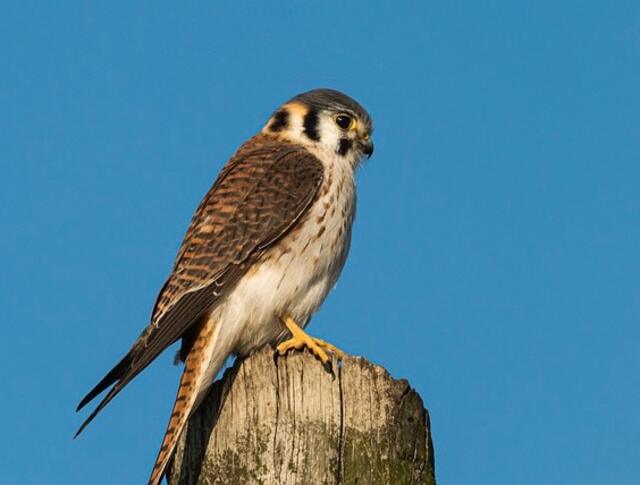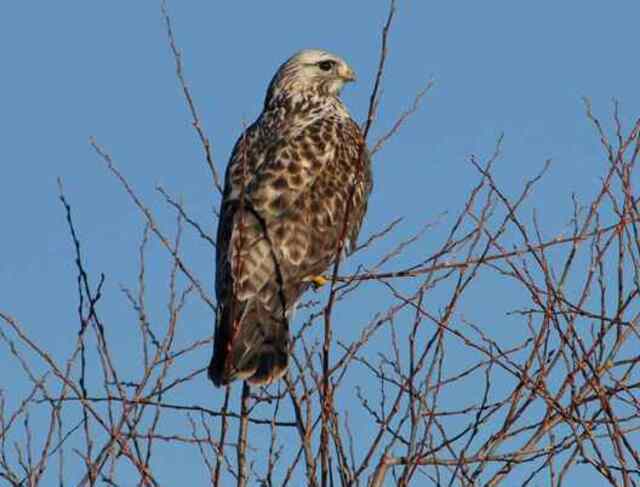Birds of prey are awe-inspiring to watch, soaring gracefully through the sky with apparent ease and agility. But have you ever wondered which among them is the stealthiest flier?
After all, their success as predators depends on their ability to stay quiet and unseen. In this article, we’ll explore which birds of prey are the quietest fliers and why they’ve evolved such remarkable abilities.
Table of Contents
Which Birds of Prey are the Quietest Fliers?
Barn Owl
- Length: 12.6-15.8 in (32-40 cm)
- Weight: 14.1-24.7 oz (400-700 g)
- Wingspan: 39.4-49.2 in (100-125 cm)
The Barn Owl is one of the quietest fliers among all birds of prey. This owl can fly almost silently due to its unique feather design and extra-large wingspan. As a result, it can swoop down on unsuspecting prey without being heard coming.
The Barn Owl has long, curved wings that feature stiff feathers with special serrations along the edges. These special serrations help reduce turbulence in the air and make for quieter flights compared to other owls or raptors that don’t have them.
In addition to this physical adaptation, the Barn Owl’s large wing size gives it greater lift, so it can fly faster and farther without having to flap its wings as often or as hard as other birds of prey do.
American Kestrel
- Length: 8.7-12.2 in (22-31 cm)
- Weight: 2.8-5.8 oz (80-165 g)
- Wingspan: 20.1-24.0 in (51-61 cm)
At first glance, the American Kestrel may seem like an ordinary bird. But this small falcon has extraordinary abilities—one of which is its incredible flying ability. The American Kestrel is one of the quietest birds in flight, making it a master of stealth and surprise during the hunt.
The kestrel’s wings are proportionately short compared to other raptors, allowing them to move quickly while making very little noise. Its feathers also have a special texture that eliminates turbulent air flow, further decreasing sound levels even as they soar at high speeds through the sky.
This silent gliding motion allows them to catch prey without alerting their quarry ahead of time—a crucial advantage for any hunter!
Read more: 50 Common Kestrel Facts (with Photos, ID & Information)
Osprey
- Length: 21.3-22.8 in (54-58 cm)
- Weight: 49.4-70.5 oz (1400-2000 g)
- Wingspan: 59.1-70.9 in (150-180 cm)
Ospreys are one of the most mysterious and quiet birds of prey due to their unique flight adaptations. Ospreys have many features that help them fly silently, including specialized feathers which create less noise in the air. Their wings also move up and down instead of side-to-side like other raptors, reducing the amount of turbulence they produce while flying.
Additionally, ospreys have special muscles in their wings that allow them to glide with great accuracy and agility without making much sound. They also possess a unique vocalization system, which enables them to communicate silently over large distances.
These adaptions make ospreys remarkable hunters because they can sneak up on their prey with little warning. Overall, ospreys are an incredibly silent bird of prey, and their adaptations for this purpose certainly make them stand out from other species!
Read more: 18 Fun Facts About Ospreys You Didn’t Know
Northern Harrier
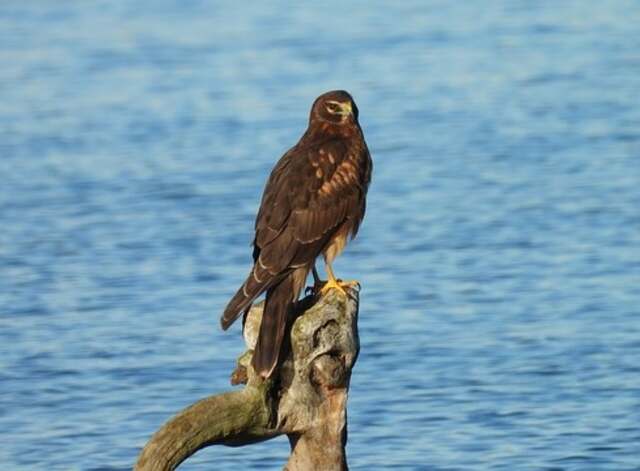
- Length: 18.1-19.7 in (46-50 cm)
- Weight: 10.6-26.5 oz (300-750 g)
- Wingspan: 40.2-46.5 in (102-118 cm)
The Northern Harrier is one of the most silent fliers in the world, due to its unique adaptation to flying without making much noise. It has long, broad wings with a special structure that helps it soar without creating air turbulence or gusts of wind.
The wing tips are also modified to minimize noise generated when flying by flexing less than other birds’ wings do. Additionally, the tail feathers are specially shaped and angled downward so that they can create lift without producing too much sound.
Finally, the Northern Harrier uses slow wing beats which allow it to move through the air more efficiently, resulting in reduced noise production when compared to faster-flying species. All these features make this bird an ideal choice for hunters who need to remain undetected during their prey pursuits.
Red-Tailed Hawk
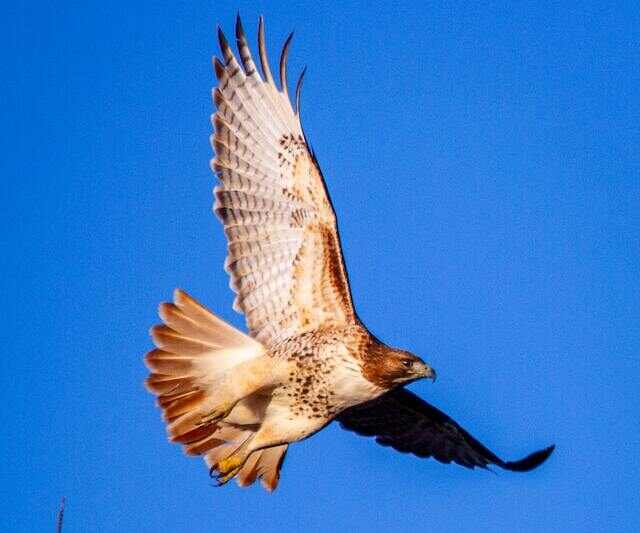
- Length: 19.7-25.6 in (50-65 cm)
- Weight: 31.8-51.5 oz (900-1460 g)
- Wingspan: 44.9-52.4 in (114-133 cm)
Birds of prey, such as the Red-tailed Hawk, are known for their silent flight. This is due to several special adaptations that help them remain undetected. These birds have extra long feathers on their wings and tail that act like air brakes when they’re in mid-flight.
These feathers create less noise and turbulence, while also helping them stay silent when gliding or hovering. The bird’s body is shaped so that it can easily slip through the air with little disturbance. It has a long slender neck, large eyes, and a broad head which reduces drag while in flight.
Lastly, its sharp talons allow it to capture prey without making any sound at all! All these features make the Red-tailed Hawk one of the most efficient and quietest fliers in the sky.
Read more: Interesting Red-Tailed Hawk Facts That Will Amaze You!
Golden Eagle
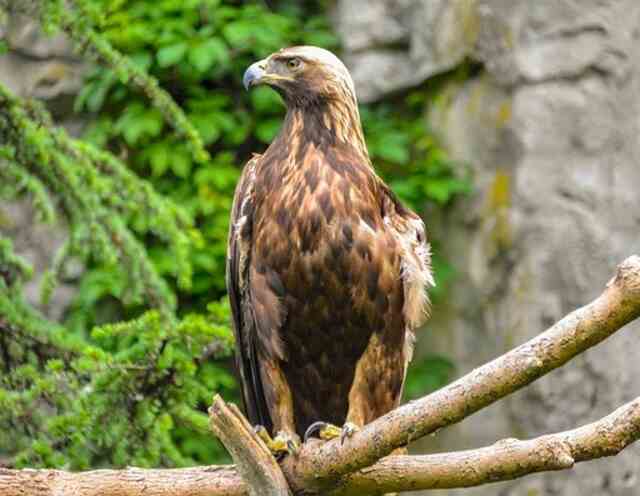
- Length: 27.6-33.1 in (70-84 cm)
- Weight: 105.8-216.1 oz (3000-6125 g)
- Wingspan: 72.8-86.6 in (185-220 cm)
The magnificent Golden Eagle is known for its enormous wingspan and extraordinary agility. However, they are also renowned for another quality, which is their extraordinary capacity for silent flight. This owes largely to their specialized wing structure, which helps them to glide with minimal noise disruption.
The feathers on their wings are stiffer than most birds, allowing them to generate lift without creating much sound in the process. In addition, the primary feathers on their wings have adapted serrations along their leading edge that further reduce drag and turbulence as they soar through the skies undetected.
Furthermore, when they want to move quickly or maneuver in tight spaces, they can open up their secondary feathers, which allows them to produce more thrust while still remaining relatively quiet. All these features combined make the Golden Eagle one of the quietest fliers among birds of prey.
Read more: 34 Interesting Facts About Golden Eagles (Detailed)
Peregrine Falcon
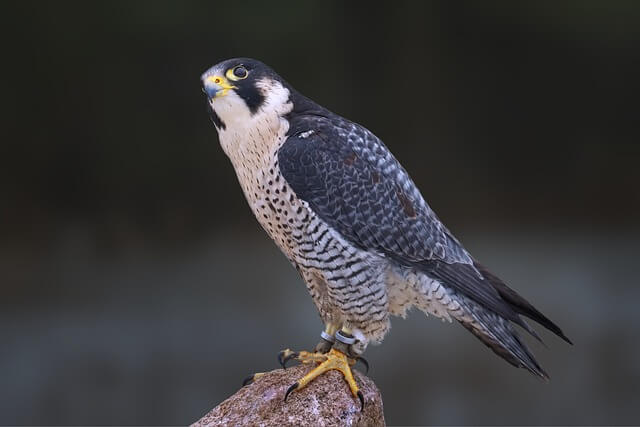
- Length: 14.2-19.3 in (36-49 cm)
- Weight: 18.7-56.4 oz (530-1600 g)
- Wingspan: 39.4-43.3 in (100-110 cm)
When in flight, the Peregrine Falcon is among the most silent predatory birds. This majestic raptor has evolved to have specialized wings that are designed for silent, efficient flying. These wings create a shape that allows air to flow over them smoothly and quietly, reducing sound production significantly.
The tips of the wings are rounded off, providing a smooth transition from one side of the wing to the other, instead of abrupt changes which can cause turbulence and noise. In addition, the feathers on the Peregrine Falcon’s wings are soft and flexible, allowing them to move through the air with almost no disturbance.
Thanks to its unique wings, this bird of prey is able to soar silently while avoiding detection from prey below.
Read more: 36 Interesting Facts About Peregrine Falcons (Detailed)
Rough-Legged Hawk
- Length: 18.5-20.5 in (47-52 cm)
- Weight: 25.2-49.4 oz (715-1400 g)
- Wingspan: 52.0-54.3 in (132-138 cm)
Rough-Legged Hawks, or Buteo lagopus, are considered some of the quietest fliers among birds of prey. This is due to their unique wingspan, which features a special adaptation that makes it possible for them to fly without making much noise.
Rough-Legged Hawks have long, broad wings with rounded tips and large primary feathers at the ends. These feathers provide more lift when flying through still air, meaning they can stay aloft for longer periods of time with less effort.
Additionally, these primary feathers produce little sound as they move through the air, allowing rough-legged hawks to soar quietly during their hunting flights. As such, this particular raptor species is well adapted for silent flight, providing them with an added advantage when stalking their prey from above.
Burrowing Owl
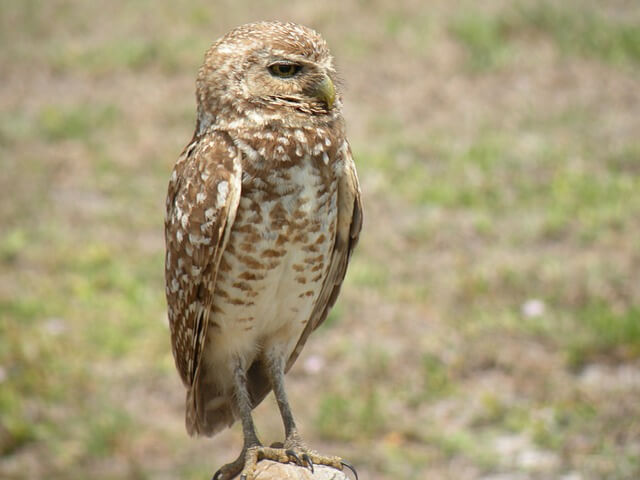
- Length: 7.5-9.8 in (19-25 cm)
- Weight: 5.3 oz (150 g)
- Wingspan: 21.6 in (55 cm)
The Burrowing Owl is a very special bird of prey known for its amazing capacity to fly silently. This special species of owl has several adaptations that give it the edge when it comes to sneaking through the air in silence. The Burrowing Owl has long, broad wings that give them great maneuverability and allow them to remain almost silent in flight.
Their feathers are soft and dense with a velvety texture, which helps reduce air resistance and turbulence when they fly. The underside of their wings is also characterized by a distinct ‘V’ shape, which further reduces sound by breaking up the turbulent flow of air around their bodies.
By using these features, birds of prey can be some of the quietest fliers in nature – capable of hunting without alerting potential prey. They have been known to swoop down on unsuspecting animals while they remain undetected!
Read more: Really Cool Burrowing Owl Facts That Will Amaze You!
Cooper’s Hawk
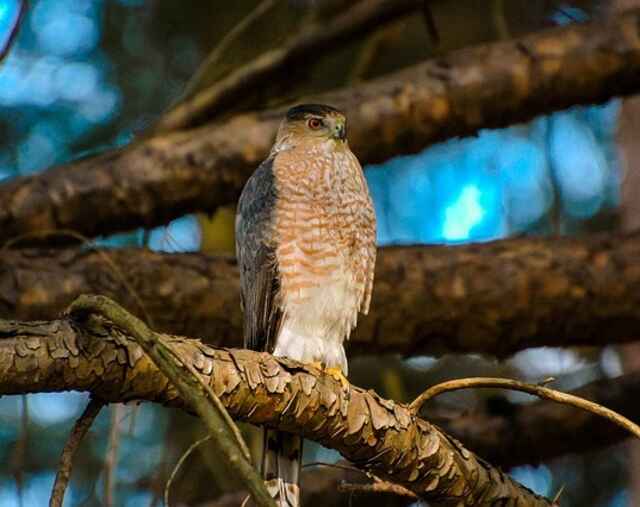
- Length: 14.6-15.3 in (37-39 cm)
- Weight: 7.8-14.5 oz (220-410 g)
- Wingspan: 24.4-35.4 in (62-90 cm)
The Cooper’s Hawk is one of the quietest birds of prey, due to its adaptations for stealthy flight. These hawks have relatively short and rounded wings, which creates less air turbulence than longer and more pointed wings. This allows them to fly silently through the air and catch their unsuspecting prey by surprise.
Additionally, they have long feathers on their primaries that act as soft rubber cushions between each feather, trapping sound vibrations and muffling any noise created by the wind passing over their wings.
Their feathers also contain an oily substance that helps reduce friction as they move through the air, further reducing any noise created during flight. By adapting these features, these hawks are able to fly with remarkable silence while still retaining speed and agility in pursuit of their next meal.
Read more: 20 Cooper’s Hawk Fun Facts (with Photos & Information)
Related Post:



